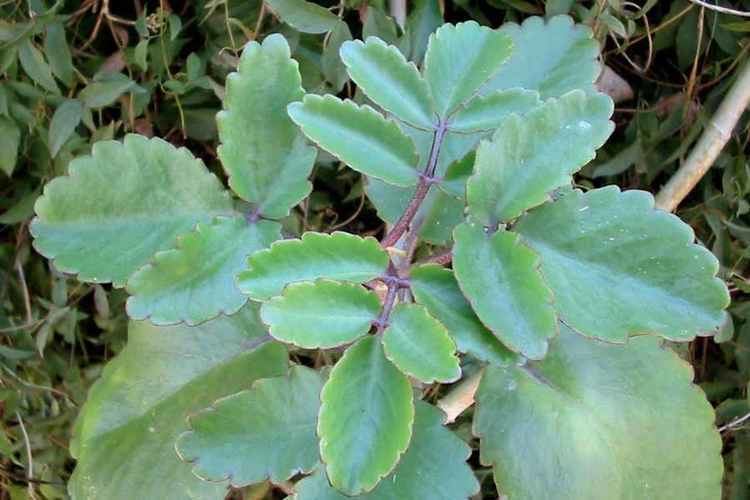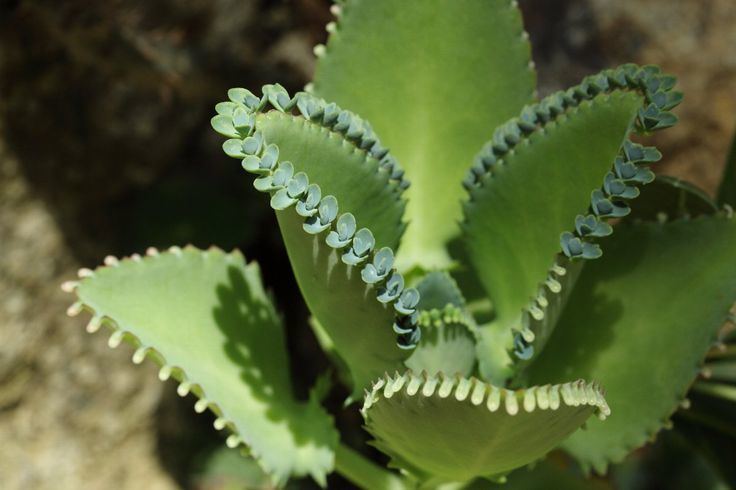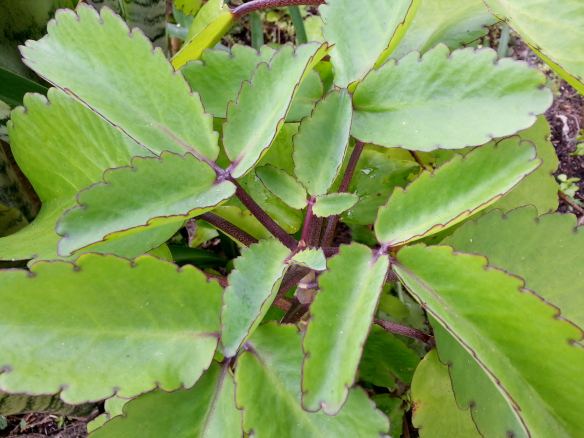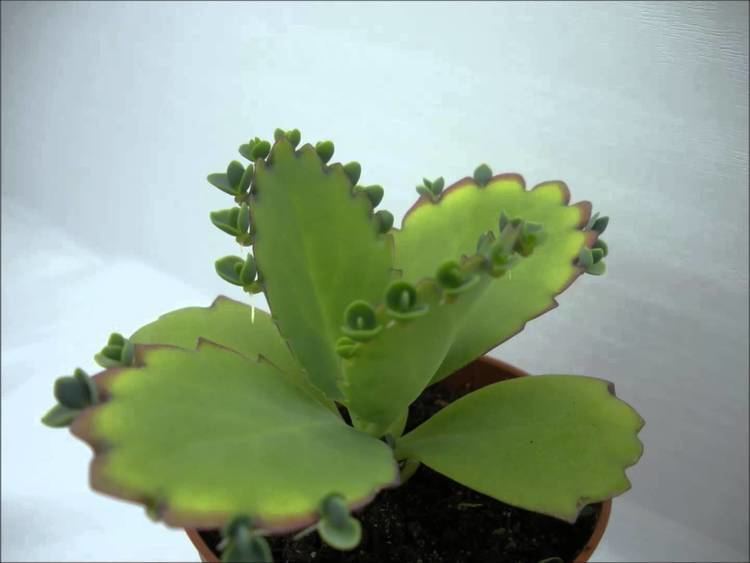Scientific name Bryophyllum | ||
 | ||
Lower classifications | ||
Different develpomental stages of the medicinal plant bryophyllum pinnatum or air plant
Bryophyllum (from the Greek βρῦον/βρύειν bryon/bryein = sprout, φύλλον phyllon = leaf) is a plant genus of the Crassulaceae family that has sometimes been included within the genus Kalanchoe. There are about forty species in the group, native originally of South Africa, Madagascar, and Asia. The group is notable for vegetatively growing small plantlets on the fringes of the leaves; these eventually drop off and root. These plantlets arise from mitosis of meristematic-type tissue in notches in the leaves.
Contents
- Different develpomental stages of the medicinal plant bryophyllum pinnatum or air plant
- Leaf of life bryophyllum pinnatum
- Toxicity
- Electricity generation
- Selected species
- References

Nowadays, bryophyllums are naturalised in many parts of the tropics, and deliberately cultivated for their attractiveness or for their interesting reproduction.

Leaf of life bryophyllum pinnatum
Toxicity

Several species of Kalanchoe are economically important for causing cardiotoxic effects in sheep and cattle, and diseases affecting the nervous system and muscles known as krimpsiekte ("shrinking disease") or as cotyledonosis. Bryophyllum pinnatum may have similar chemical components, bufadienolide alkaloids.

There are many hybrids within Bryophyllum, and also hybrids with Kalanchoe such as Kalanchoe × crenatodaigremontiana (B. laxiflorum (as the synonym B. crenatum) × K. daigremontiana) or Houghton's hybrid (K. daigremontianum × B. delagoense).
Electricity generation
Tests conducted in Bangladesh by Dr. Kamrul Alam Khan showed crushed leaves of Bryophyllum daigremontianum (পাথরকুচি) is a good electrolyte and it can be used in a battery to generate electricity. 1 kg of crushed Bryophyllum leaves can produce up to 20 kW of power.
Selected species
The three most commonly cultivated species are:

Some other species in this section are:
